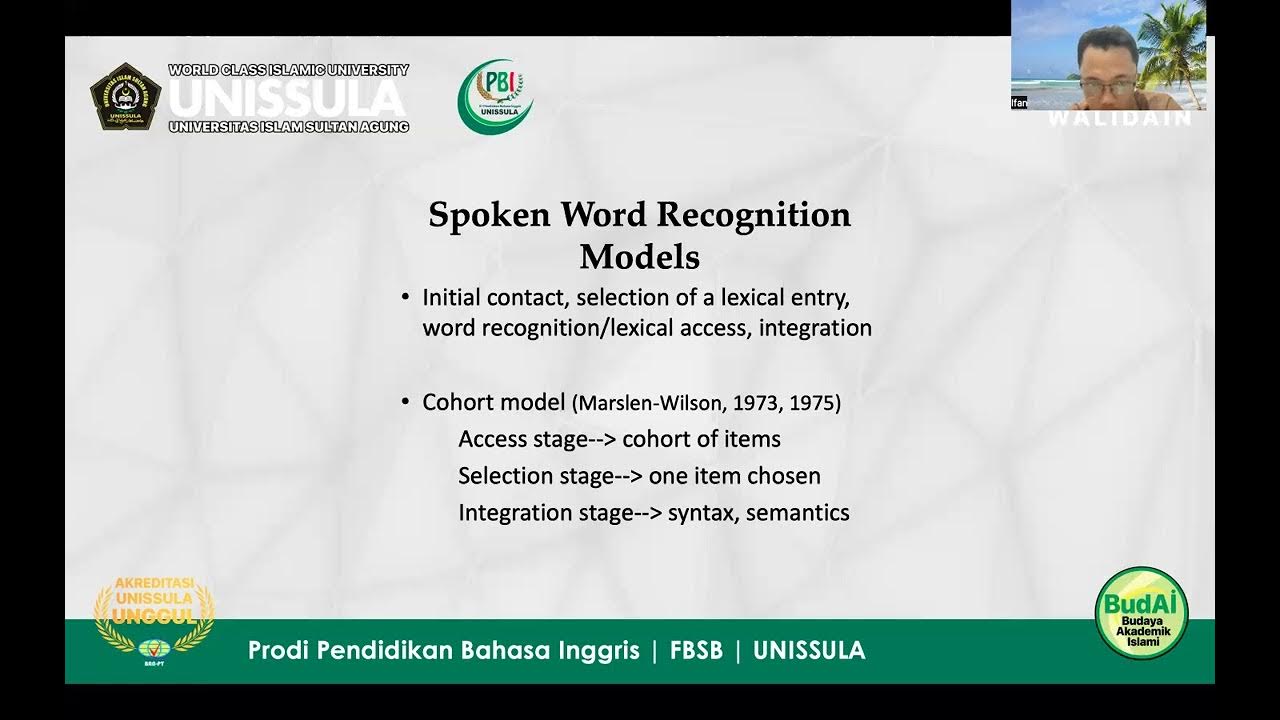1. Introduction
Summary
TLDRThe video script offers insights into teaching English as a Second Language (ESL) to kindergarten students, highlighting the challenges and solutions for educators. It emphasizes the importance of engaging young learners with short attention spans through interactive learning, hands-on activities, games, and songs. The script suggests using visual aids and contextualizing vocabulary through relevant stories and experiences. Additionally, it covers classroom management strategies for an inclusive environment and lesson planning techniques tailored to diverse learner needs, providing comprehensive training for kindergarten ESL teachers to unlock the potential of young learners.
Takeaways
- 🌟 Teaching ESL to kindergarten is a rewarding experience with unique challenges.
- 🧩 Dealing with diverse learners with varying English proficiency requires tailored approaches.
- 🔍 Short attention spans and boundless energy are common traits of kindergarteners that ESL teachers must address.
- 🎯 Interactive learning is key to capturing students' attention and making English lessons enjoyable.
- 🤲 Incorporating hands-on activities, games, and songs can enhance engagement and learning.
- 🚀 Encouraging movement and participation is essential to keep young learners actively involved.
- 👀 Use of visual aids, props, and real-life examples can make abstract concepts more concrete for young minds.
- 📚 Contextualizing new vocabulary through stories and pictures relevant to students' lives aids in language acquisition.
- 🏫 Effective classroom management strategies are crucial for creating a positive and inclusive learning environment.
- 📘 Differentiated lesson planning is necessary to cater to the diverse needs and interests of young learners.
- 🛠 Comprehensive training and resources are provided to help kindergarten ESL teachers overcome challenges and enhance learning.
Q & A
What is the primary challenge of teaching ESL to kindergarten students?
-The primary challenge is managing the short attention spans and boundless energy of kindergarteners while keeping them engaged and focused during English lessons.
Why is scaffolding instruction important for young learners in ESL?
-Scaffolding instruction is important because young learners are in the early stages of language development, and it helps introduce new vocabulary in an accessible and meaningful way.
What strategies can be used to capture students' attention and make learning enjoyable in ESL kindergarten classrooms?
-Interactive learning through hands-on activities, games, and songs can be used to capture students' attention and make learning enjoyable.
How can ESL teachers encourage movement and participation in the classroom?
-Teachers can encourage movement and participation by incorporating activities that require physical engagement and by creating an environment that promotes active involvement.
What role do visual aids, props, and real-life examples play in ESL teaching?
-Visual aids, props, and real-life examples make abstract concepts more concrete and help contextualize new vocabulary, making it easier for young learners to understand and retain information.
What is the significance of contextualizing new vocabulary through stories, pictures, and experiences?
-Contextualizing new vocabulary through stories, pictures, and experiences makes it relevant to students' lives, enhancing their understanding and making the learning process more meaningful.
What are some effective classroom management strategies for ESL kindergarten teachers?
-Effective classroom management strategies include creating a positive and inclusive learning environment where all students feel valued and supported.
How can lesson planning be made interactive and differentiated for young ESL learners?
-Lesson planning can be made interactive and differentiated by designing lessons that cater to the diverse needs and interests of young learners, ensuring each student is engaged.
What kind of training and resources are provided in the specialized ESL course for kindergarten teachers?
-The specialized ESL course provides comprehensive training and resources to help teachers overcome challenges and unlock the full potential of their young learners.
How does the course address the diverse array of learners with varying levels of English proficiency?
-The course addresses the diverse array of learners by offering practical solutions and strategies that can be adapted to suit different levels of English proficiency and developmental needs.
What is the ultimate goal of the ESL course for kindergarten teachers?
-The ultimate goal of the ESL course for kindergarten teachers is to equip them with the skills and knowledge to effectively teach English as a second language and unlock the full potential of their young learners.
Outlines

This section is available to paid users only. Please upgrade to access this part.
Upgrade NowMindmap

This section is available to paid users only. Please upgrade to access this part.
Upgrade NowKeywords

This section is available to paid users only. Please upgrade to access this part.
Upgrade NowHighlights

This section is available to paid users only. Please upgrade to access this part.
Upgrade NowTranscripts

This section is available to paid users only. Please upgrade to access this part.
Upgrade NowBrowse More Related Video
5.0 / 5 (0 votes)





